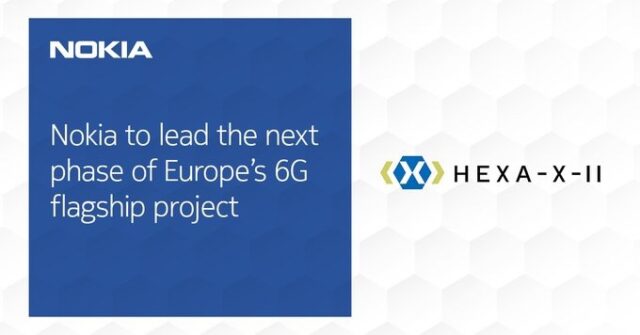Nokia today announced that it will lead the Hexa-X-II project, the second phase of the European 6G flagship initiative. This new phase will expand the Hexa-X partner list to 44 organizations that are tasked with creating the pre-standardized platform and system view that will form the basis for many inputs into future 6G standardization.
The Hexa-X-II project has been awarded funding from the European Commission as part of the first call of the Smart Network and Services Joint Undertaking (SNS-JU). This is the next significant step toward bringing together key industry stakeholders in Europe. The goal of both Hexa-X and Hexa-X-II is to establish Europe as leader in 6G.
Hexa-X-II represents the full value chain for future connectivity solutions. Its members range from network vendors and communication service providers to verticals and technology providers, as well as the most prominent European communications research institutes.
Peter Vetter, President of Nokia’s Bell Labs Core Research, said: “Nokia is honored to lead in this pioneering project. In the 6G era, the digital, physical and human worlds will become far more integrated. Our goals must reflect this level of integration and inter-dependency. As billions more people and devices get connected, urbanization intensifies, and we strive to manage the limitations on energy and materials, the role of networks and 6G will only deepen. It is essential that we keep the larger context in mind as we imagine the new network.”
Enabled by the outcomes of Hexa-X innovations, the Hexa-X-II consortium will strive to overcome the following societal challenges:
Sustainability: Hexa-X-II will research technologies that contribute to a zero-carbon footprint and limit energy and material consumption.
Inclusion: Hexa-X-II aims to provide connectivity to people in developing countries as well as to the under-privileged members of developed societies.
Trustworthiness: Hexa-X-II will ensure data transparency, security and privacy, and network robustness.
As part of the announcement, Ericsson takes the role as technical manager for Hexa-X-II. Orange, TIM SpA, TU Dresden, University of Oulu, IMEC and Atos will help coordinate various work packages such as radio evolution and innovation, future devices and flexible infrastructure, smart network management and values, and requirements and ecosystem.
Nokia has been at the forefront in commercializing every generation of wireless technology, from the first GSM call to the best performing 4G networks and the world’s fastest 5G connections. Nokia and Nokia Bell Labs, the world-renowned industrial research arm of Nokia, pioneered many of the fundamental technology innovations that are being used to develop 5G standards. In addition, Nokia is already laying the foundations for 5G-Advanced in 3GPP Releases 18 and 19, which will further enhance 5G capabilities and enable new verticals. These new capabilities include features like XR, super-accurate positioning, improved coverage, and AI/ML for the 5G-RAN. Many of these technology developments will bridge the gap between 5G and 6G.
In addition to Hexa-X-II and Hexa-X, Nokia also leads 6G-ANNA, the German 6G lighthouse project and plays an instrumental role in establishing the Horizon Europe Smart Network and Services joint undertaking.
The Hexa-X-II project aims to start work on 1 January 2023, with a planned duration of two and a half years.




